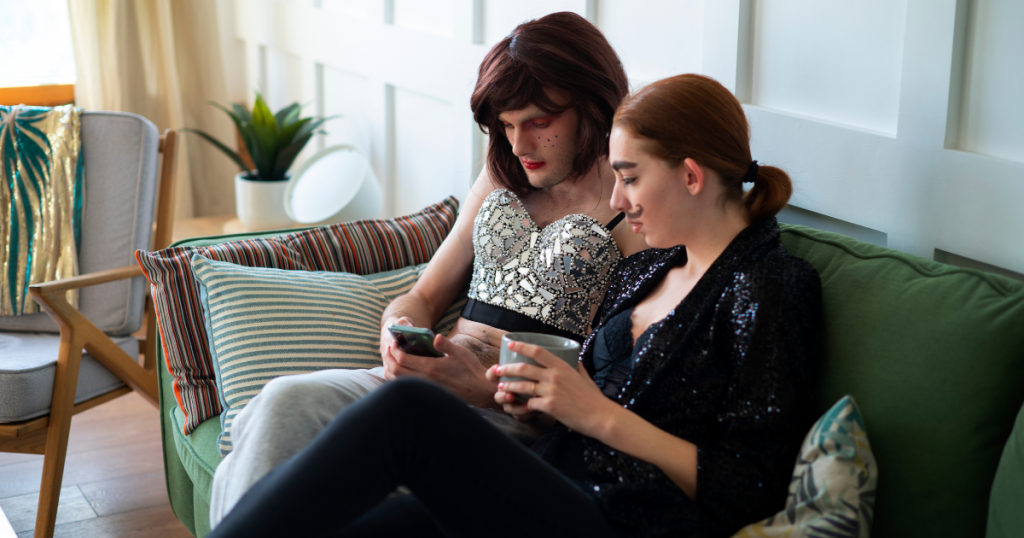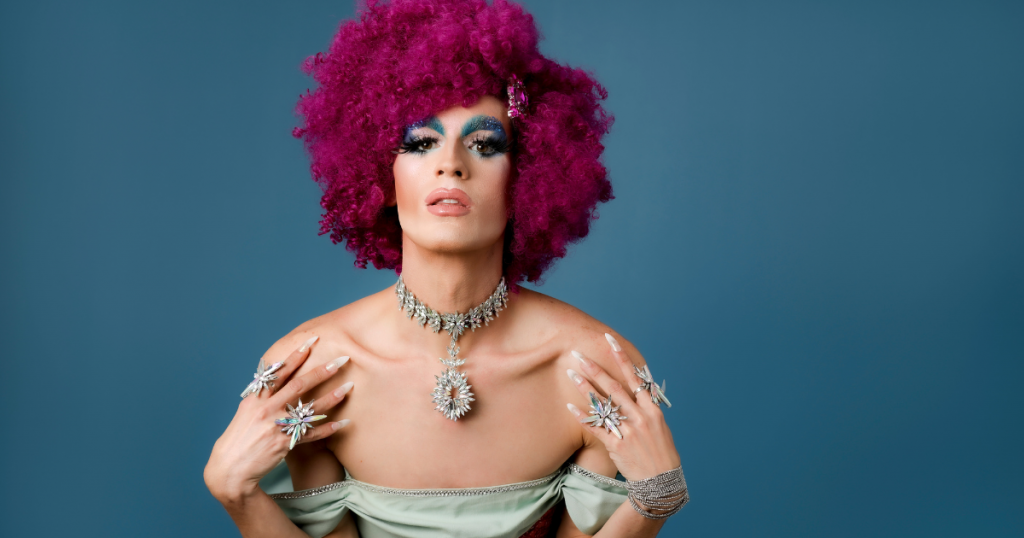
Crossdressing is a term that refers to the act of wearing clothing and other items associated with a gender identity that is different from one’s own. It is a form of self-expression that allows people to explore and express different aspects of their identity and can be a way to challenge traditional gender norms and societal expectations.
Crossdressing has a long and complex history and has been practiced by people from all walks of life throughout the world. It has often been stigmatized and misunderstood, and crossdressers have faced discrimination and persecution for their actions. However, in recent years, crossdressing has gained more acceptance and understanding and is increasingly being seen as a valid form of self-expression.
There are many different types of crossdressing, including drag, transvestitism, and gender nonconforming expression. Each type of cross-dressing has its unique characteristics and can be a way for people to explore different aspects of their identity. Additionally, there are many different reasons why people crossdress, including self-expression, challenging gender norms, and exploring different aspects of identity.
Despite the progress that has been made in recent years, crossdressers still face many challenges and barriers. They may face discrimination and stigma and may struggle to find acceptance and understanding from others. However, they are an important and valued part of the LGBTQ+ community and are helping to create a more inclusive and diverse world.
In this blog, we will provide a guide to crossdressing basics, exploring the different types of cross-dressing, the reasons people crossdress, and the challenges and barriers that crossdressers may face. Whether you are new to crossdressing or are looking to learn more about it, this guide will provide you with a better understanding of the world of crossdressing and how it can be a form of self-expression and empowerment.
There are many different types of crossdressing, each with its unique characteristics and ways in which it can be used as a form of self-expression. Some of the most common types of crossdressing include:
Drag: Drag is a type of crossdressing that is often associated with the LGBTQ+ community and is often performed as a form of entertainment. Drag queens are male performers who dress in feminine clothing and often wear heavy makeup and wigs, while drag kings are female performers who dress in masculine clothing. Drag performances often involve singing, dancing, and lip-syncing, and can be a way for performers to explore different aspects of their identity and challenge traditional gender norms.
Transvestitism: Transvestitism, also known as transvestism, refers to the act of wearing clothing and other items associated with the opposite gender for personal pleasure or sexual gratification. Transvestites are people who engage in transvestitism, and may do so regularly or only occasionally. Transvestitism can be a way for people to explore different aspects of their identity and to express their gender in a way that may be different from their assigned gender at birth.
Gender Nonconforming Expression: Gender nonconforming expression refers to the act of expressing one’s gender in a way that does not conform to traditional societal expectations. This can include crossdressing, but can also involve other forms of expression such as wearing clothing that is traditionally associated with a different gender, using a different name or pronouns, or changing one’s appearance in other ways. Gender-nonconforming expression is a way for people to explore and express their gender in a way that may be different from the norm and can be a form of self-expression and empowerment.
Overall, there are many different types of crossdressing, and each type has its unique characteristics and ways in which it can be used as a form of self-expression. From drag performances to transvestitism and gender nonconforming expression, crossdressing is a diverse and multifaceted practice that allows people to explore different aspects of their identity and challenge traditional gender norms.

There are many different reasons why people crossdress, and each person’s motivations may be unique to their own experiences and circumstances. Some of the most common reasons for crossdressing include:
Self-expression: For many people, crossdressing is a form of self-expression that allows them to explore different aspects of their identity and express themselves in a way that may be different from societal expectations. Crossdressing can be a way for people to express their gender in a way that feels authentic to themselves and can be a source of self-discovery and personal growth.
Challenging Gender Norms: Crossdressing can also be a way for people to challenge traditional gender norms and push back against societal expectations. By dressing in clothing that is traditionally associated with a different gender, crossdressers can help to disrupt traditional notions of what is acceptable or appropriate for men and women to wear. In this way, cross-dressing can be a form of resistance and a way to create a more inclusive and diverse world.
Exploring Different Aspects of Identity: Crossdressing can also be a way for people to explore different aspects of their identity and try on different versions of themselves. It can be a way for people to experiment with different styles and discover new sides of themselves that they may not have known existed. For some people, cross-dressing can be a way to explore their gender identity and to better understand themselves.
Overall, there are many different reasons why people crossdress, and each person’s motivations may be unique to their own experiences and circumstances. Whether it is for self-expression, to challenge gender norms, or to explore different aspects of identity, cross-dressing can be a powerful and empowering form of self-expression that allows people to be true to themselves and to express their authentic selves.
Despite the progress that has been made in recent years, crossdressers still face many challenges and barriers as they strive to be recognized and accepted in society. Some of the challenges and barriers that crossdressers may face include:
Discrimination and Stigma: Crossdressers often face discrimination and stigma due to their choice to express their gender in a way that is different from societal expectations. They may be ridiculed, ostracized, or discriminated against because of their cross-dressing, and may face difficulty in finding acceptance and understanding from others. This discrimination and stigma can be emotionally and mentally taxing and can make it difficult for crossdressers to be their authentic selves.
Lack of Acceptance: Crossdressers may also struggle to find acceptance and understanding from others, including friends, family, and even members of the LGBTQ+ community. They may feel like they do not fit in or are not accepted because of their cross-dressing, and may feel isolated and alone. This lack of acceptance can be especially difficult for crossdressers who are just starting and may not have a support system in place.
Legal Challenges: Cross-dressers may also face legal challenges and barriers, especially in countries where cross-dressing is illegal or where there are laws that discriminate against the LGBTQ+ community. These legal challenges can make it difficult for crossdressers to live openly and authentically and may create additional barriers to acceptance and equality.
Health Risks: Crossdressers may also face health risks due to the use of hormones, makeup, and other substances that are used in the crossdressing process. These substances can have negative side effects and may pose health risks, and crossdressers may struggle to find access to safe and affordable healthcare.
Overall, crossdressers face many challenges and barriers as they strive to be recognized and accepted in society. From discrimination and stigma to legal challenges and health risks, crossdressers have to overcome several obstacles as they work towards increased visibility and acceptance. However, despite these challenges, crossdressers are an important and valued part of the LGBTQ+ community and are helping to create a more inclusive and diverse world.
Crossdressing is a complex and multifaceted practice that allows people to explore and express different aspects of their identity and challenge traditional gender norms. Whether it is for self-expression, to challenge societal expectations, or to explore different aspects of identity, cross-dressing can be a powerful and empowering form of self-expression.
However, despite the progress that has been made in recent years, crossdressers still face many challenges and barriers as they strive to be recognized and accepted in society. From discrimination and stigma to legal challenges and health risks, crossdressers have to overcome some obstacles as they work towards increased visibility and acceptance.
We must continue to work towards a more inclusive and diverse world where all people, including crossdressers, are accepted and celebrated for who they are. By supporting and advocating for the rights of crossdressers, we can create a world where everyone is free to express their authentic selves and to be their true selves without fear of discrimination or persecution. Together, we can create a world where crossdressers are valued and accepted, and where they can live openly and authentically.
Leave a comment